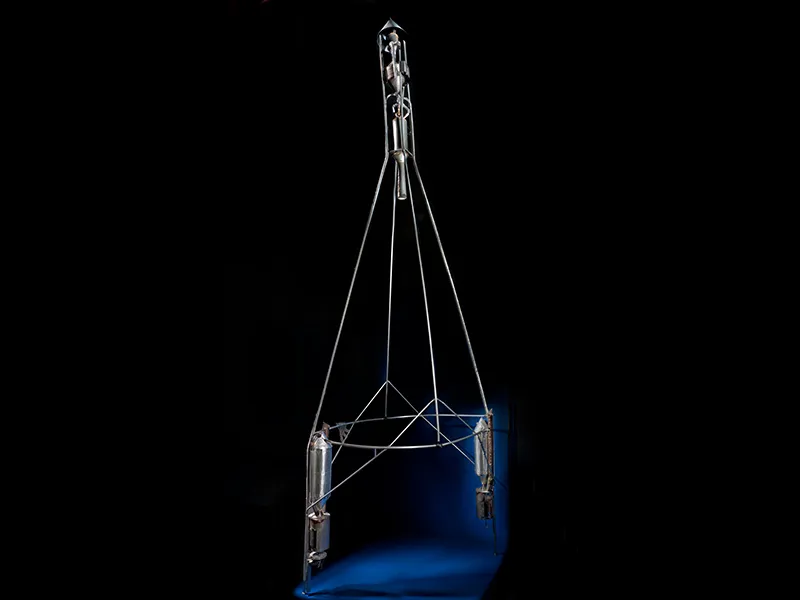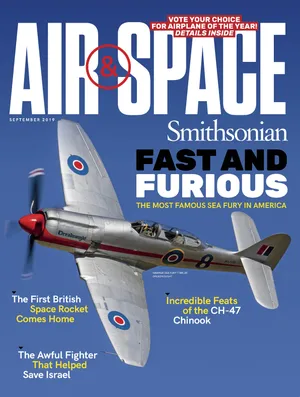Robert Goddard’s 1928 Hoopskirt Rocket Was a (Very) Small Step to the Moon
A three-second flight to 204 feet may not sound impressive now, but it was a big deal then.
:focal(396x266:397x267)/https://tf-cmsv2-smithsonianmag-media.s3.amazonaws.com/filer/ef/e3/efe3a8a7-35d5-4891-9e82-09cffceb5240/si-76-1704p.jpg)
The fourth time was the charm for Robert H. Goddard’s “Hoopskirt Rocket,” so named for its resemblance to the wire-frame skirts that had been popular among fashionable women around the time the rocketry pioneer was born, in 1882. He’d tried on three occasions beginning on July 18, 1928 to get this, his second liquid-fuel rocket design, to fly, hoping merely for a successful demonstration of its rocket motor. But not until December 26 did the Hoopskirt clear the launch tower, flying 204.5 feet in 3.2 seconds over a field near Worcester, Massachusetts.
At the top of the tepee-like structure, which Goddard left uncovered to make it as lightweight as possible, is the parachute container; below it is the gasoline tank, and below the tank, the combustion chamber and exhaust nozzle. The two cylindrical structures near the bottom are fuel tanks containing liquid oxygen and equipped with alcohol burners used to maintain engine pressure.

The flimsy steel and aluminum frame was destroyed upon its violent return to the ground. Goddard’s wife, Esther Christine Goddard, donated the reconstructed rocket to the Smithsonian in 1959. (The Smithsonian Institution had awarded Goddard a $10,000 grant for his research more than three decades earlier.) That same year, the NASA Goddard Space Flight Center opened in Greenbelt, Maryland.
Though primitive, the Hoopskirt reflected the visionary scope of Goddard’s thinking. He proposed a rocket-propelled voyage to the moon 57 years before it happened, and he was issued a patent for a multi-stage rocket in 1914. Less than a decade after the first flight of the Hoopskirt, he launched a rocket with a motor pivoted on gimbals under the influence of a gyroscope—one giant leap toward Neil Armstrong’s giant leap.
